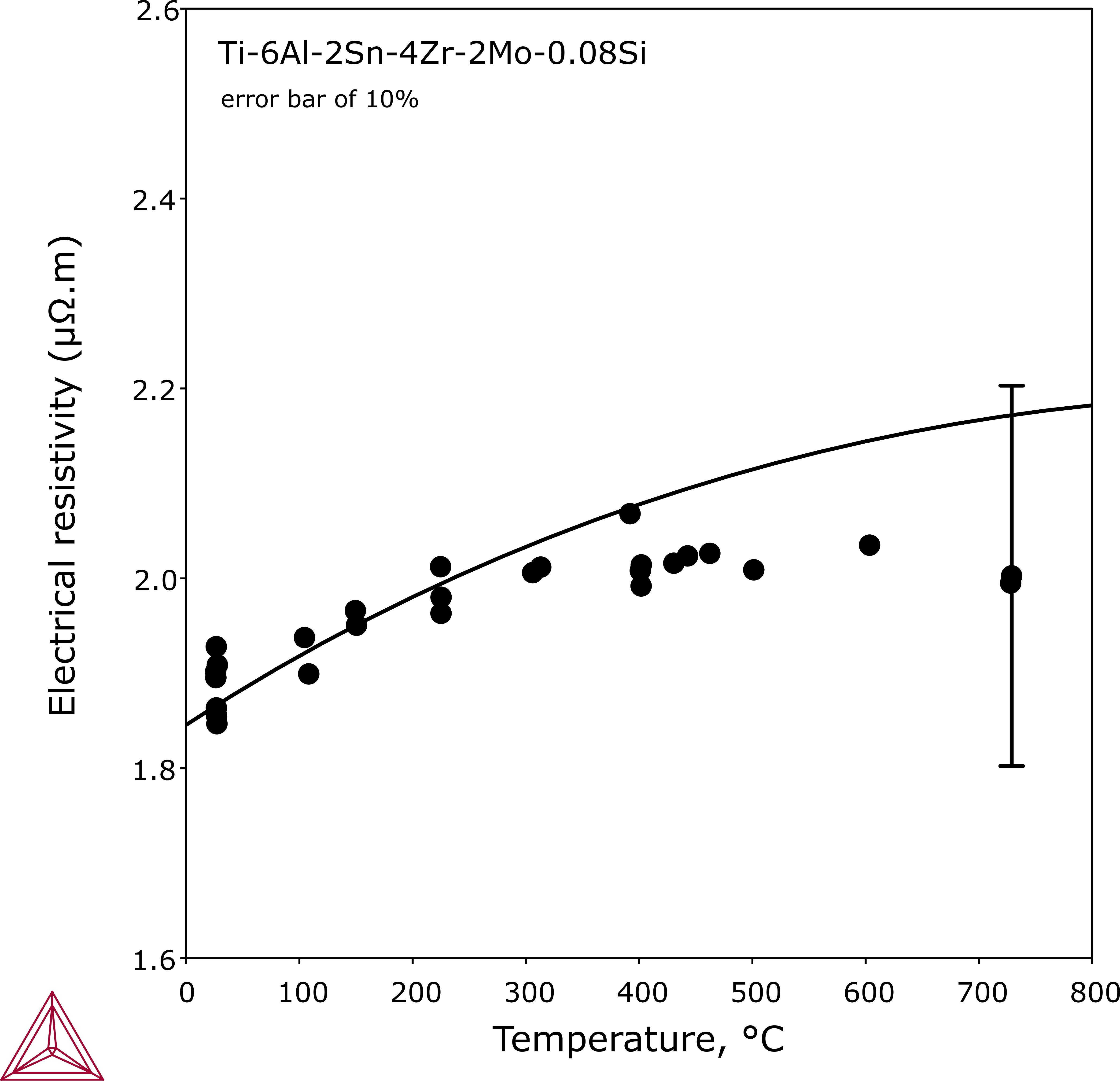Electrical Resistivity of Some Commercial Ti Alloys
Using Thermo‑Calc with the TCS Ti/TiAl-based Alloys Database (TCTI), you can calculate the quantities of a phase φ with the variable ELRS (φ) or a system (i.e. alloy) with ELRS. You can also calculate the derived quantity, i.e. electrical conductivity (ELCD) in a similar way.
The database includes electrical resistivity starting with version 4 (TCTI4).
Ti-based Near-Alpha Alloy: Ti-6242Si
Ti-6Al-2Sn-4Zr-2Mo-0.08Si is usually categorized as a near-alpha alloy. You can make calculations for multicomponent titanium alloys with the modeled electrical resistivity.
Figure 1: Calculated electrical resistivity of Ti-6242Si using the ‘Equilibrium with Freeze-in Temperature’ Property Model selected on the Property Model Calculator. The data are from [1994ASM].
Read more on our website about Property Models, including information about the material specific Model Libraries (i.e steel, nickel, titanium, etc.), as well as how to create your own custom models in TC‑Python. If you are in Thermo‑Calc, press F1 to search the help.
Measured vs Calculated Electrical Resistivity
This example shows a comparison between measured and calculated electrical resistivity for a wide variety of commercial titanium alloys. The respective calculation is made by freezing-in the state at the typical heat treatment temperature of manufacture for each alloy. Deviations are expected, since electrical resistivity of alloys varies depending on the thermal-mechanical processing and actual composition. The black solid line in the plot indicates where calculated values are equal to experimental data. The blue dashed lines mark for 10% deviations while the pink dashed lines are for 15% deviations.
Figure 2: A comparison between measured and calculated electrical resistivity of various Ti-based alloys at room temperature. The data are from [1994ASM].
Reference
[1994ASM] R. Boyer, E. W. Collings, W. Gerhard (ed), Materials Properies Handbook: Titanium Alloys (ASM International, 1994).

